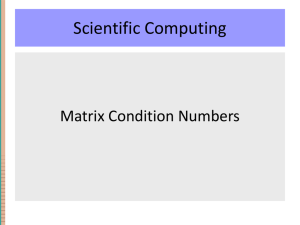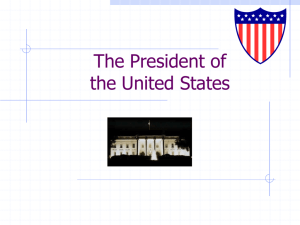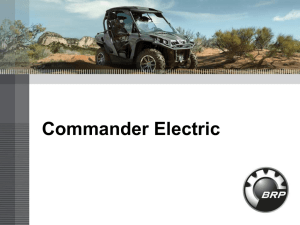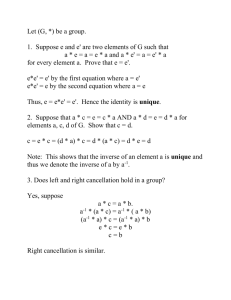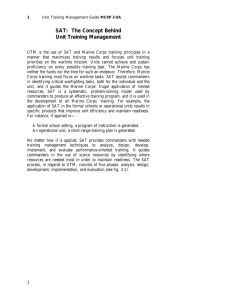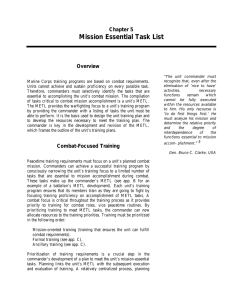CA Mission Letter Appendix A
advertisement
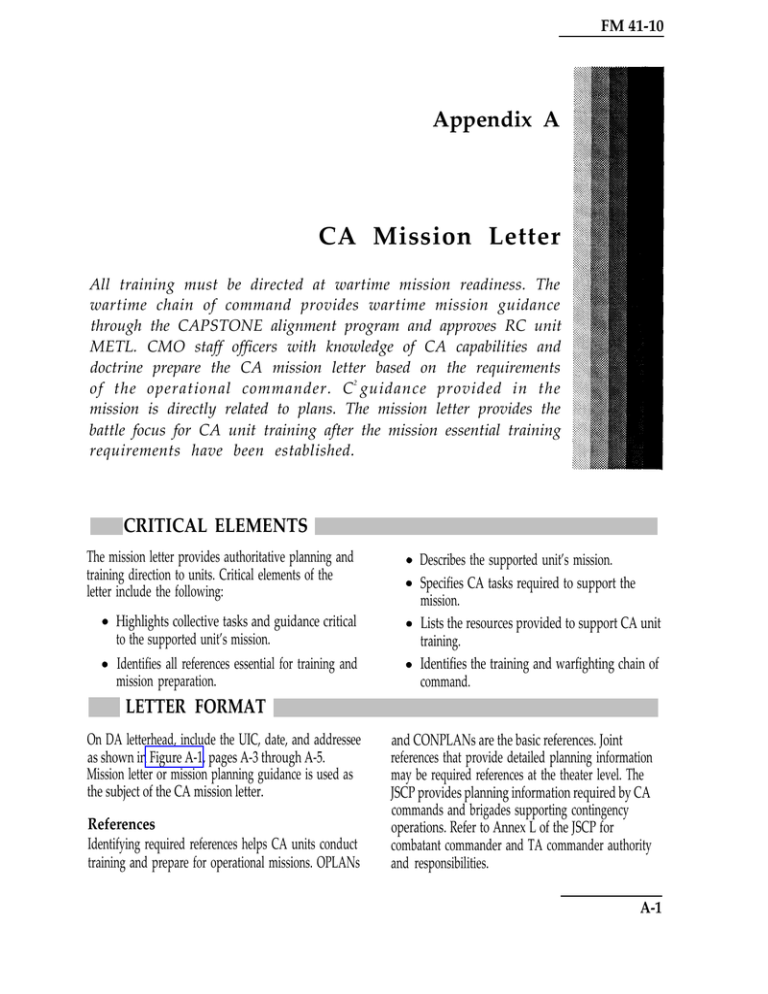
FM 41-10 Appendix A CA Mission Letter All training must be directed at wartime mission readiness. The wartime chain of command provides wartime mission guidance through the CAPSTONE alignment program and approves RC unit METL. CMO staff officers with knowledge of CA capabilities and doctrine prepare the CA mission letter based on the requirements 2 of the operational commander. C guidance provided in the mission is directly related to plans. The mission letter provides the battle focus for CA unit training after the mission essential training requirements have been established. CRITICAL ELEMENTS The mission letter provides authoritative planning and training direction to units. Critical elements of the letter include the following: Highlights collective tasks and guidance critical to the supported unit’s mission. Identifies all references essential for training and mission preparation. Describes the supported unit’s mission. Specifies CA tasks required to support the mission. Lists the resources provided to support CA unit training. Identifies the training and warfighting chain of command. LETTER FORMAT On DA letterhead, include the UIC, date, and addressee as shown in Figure A-1, pages A-3 through A-5. Mission letter or mission planning guidance is used as the subject of the CA mission letter. References Identifying required references helps CA units conduct training and prepare for operational missions. OPLANs and CONPLANs are the basic references. Joint references that provide detailed planning information may be required references at the theater level. The JSCP provides planning information required by CA commands and brigades supporting contingency operations. Refer to Annex L of the JSCP for combatant commander and TA commander authority and responsibilities. A-1 FM 41-10 If the CA unit is expected to adhere to specific training guidance, doctrinal manuals, and SOPs, they should be listed as references. activities, conduct area assessment, coordinate foreign nation support, coordinate H/CA, support disaster relief. Mission Paragraph 2 (Figure A-1) contains the purpose, which is best stated in one sentence. This paragraph also includes the supported and CA units’ missions. Supported Unit’s Mission The supported unit’s mission considers all specified and implied tasks. The supported unit commander identifies his organization and what will be done in the operational area as specifically as possible in a broad statement. CA Mission Generally the CA mission is to plan and conduct CA operations in support of the supported unit’s mission. In cases where the commander’s CA authority does not include involvement in government functions, planning and conducting CMO may define the CA mission more specifically. Additional Instructions At a minimum, the supported unit will specify its requirements for submission of a METL and CA annexes to its OPLANs/OPORDS. Concept of Operations Paragraph 3 in Figure A-1 contains the concept of operations. The paragraph contains several subparagraphs, which outline the training concept, specified tasks, and any additional instructions. The Training Concept The supported commander explains how he sees his organization preparing for employment. Separate subparagraphs for “Battle Focus” and “Training Focus” are sometimes used to help explain the commander’s intent. Specified Tasks Critical CA tasks will be specified by the supported unit, e.g., identify required training events and A-2 Administration and Logistics Support or resources provided by the supported unit will be specifically listed, e.g., overseas deployment lines, programmed funds, facilities, services, or supplies. Command, Control, and Communications 3 The CA unit must know the wartime C relationship. Any difference from the present relationship (peacetime or training) must be defined, e.g., change in OPCON. Communication instruction must be detailed enough to authorize CA unit equipment or access systems that are mission essential. Enclosures, Annexes, and Distribution Required enclosures and annexes are listed as shown in Figure A-1. Numerous commanders may be required to support or direct CA mission training activities. The affected commanders should receive enough information to support readiness and training if not an addressee to this letter. Examples includeJoint headquarters. Other services. Army SO. GP forces. Army RC commands. FORSCOM installations. FM 41-10 A-3 FM 41-10 A-4 FM 41-10 A-5



